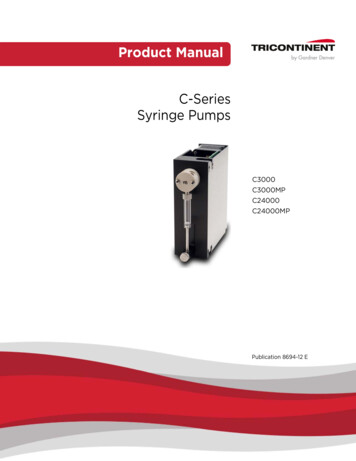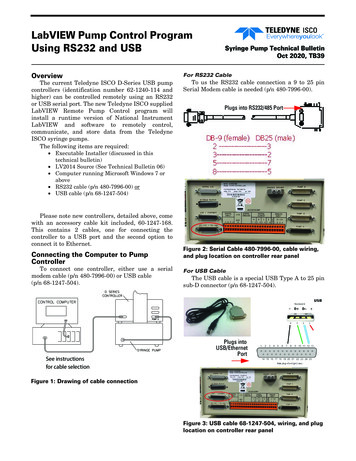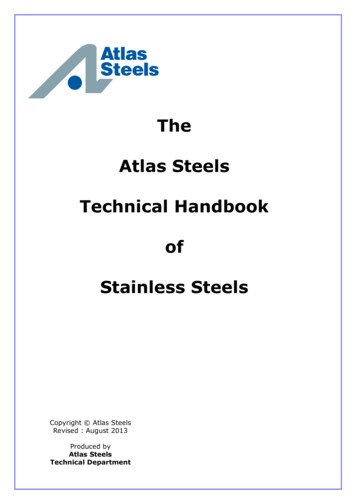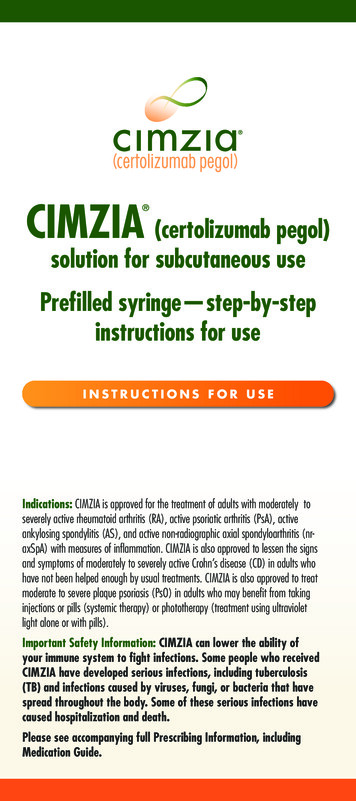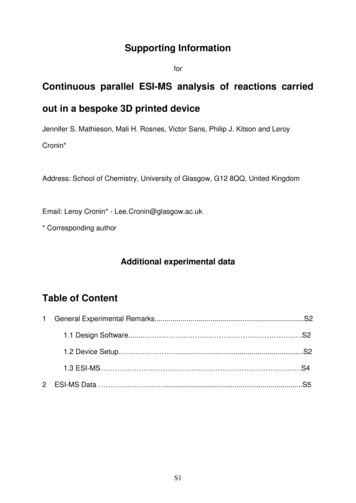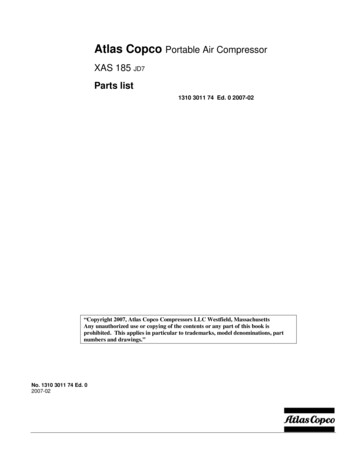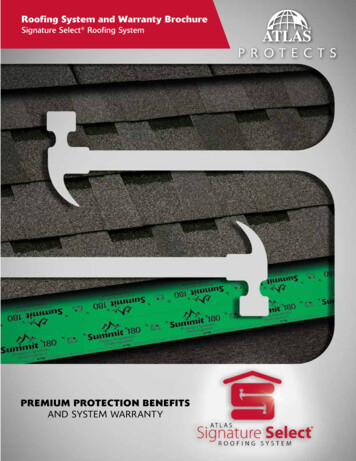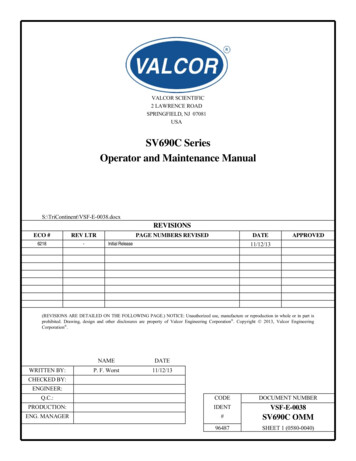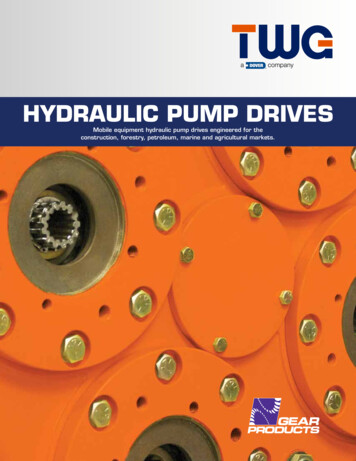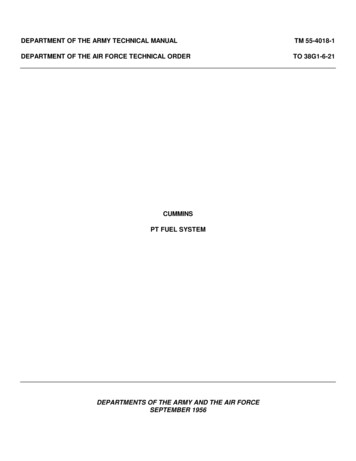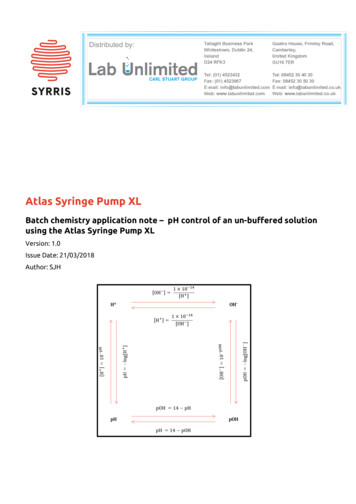
Transcription
Atlas Syringe Pump XLBatch chemistry application note – pH control of an un-buffered solutionusing the Atlas Syringe Pump XLVersion: 1.0Issue Date: 21/03/2018Author: SJH
1 SummaryThis application note demonstrates how to perform pH control of abatch reactor using the Atlas Syringe Pump. The example described inthis application note uses the Atlas Syringe Pump to automaticallydose solutions of sodium hydroxide and sulfuric acid to control thepH of 300 mL unbuffered water to pH 7.2 IntroductionA wealth of chemical and biological transformations exist that showstrong correlation between pH and rate of reaction1. Many startingmaterials, reactive intermediate and products are also sensitive toacids/bases, so accurate pH control is essential for reactions toprogress. Automated pH control can save chemists valuable time, byremoving the need to manually add small amount of acid/base overthe course of a reaction.2.1 EquipmentThe experiment uses the Atlas Syringe Pump XL (equipped with 25mL syringes) with pH node and probe connected, controlled by theAtlas PC software dosing into an Atlas HD reactor system. The partnumbers for the equipment used are shown below: Atlas Syringe Pump XL (2200376) pH and Temperature Node (2200071) Node Extension (2101023) pH probe – 400mm x 12mm with Swivel Adaptor (2200029)All equipment was setup as shown below:Figure 1 - Experimental setup1Johnson L.L., Pavlovsky, A.R., Johnson, A.R., Janowicz, J.A., Man, C-F.M., Ortwine,D.F., Purchase, C.F., White, A.D. and Hupe, D.J., (2006) A rationalization of the AcidicpH Dependence for Stromelysin-1 (Matrix Metalloproteinase-3) Catalysis andInhibition, J. Biol. Chem., 275 (15), 11026-11033Syrris Ltd.Page 2 of 5
2.2 Experimental setupAtlas Syringe Pump XL setup:Pump fitted with 25 mL syringes, with each 4-way valve using port Afor aspiration and port B for dispensing, ports C & D were blockedwith blanking plugs. Each pump has a maximum fill rate of 50 mL/min,the maximum pump rate was set to 4 mL/min.Pump channel A – 0.001 M NaOH(aq)Pump channel B – 0.001 M H2SO4(aq)The pump is connected to PC via USB to LEMO cable. A nodeextension, pH node, and pH probe were attached to the rear of thesyringe pump.Prior to experimentation, each pump channel was primed and the pHprobe was calibrated using buffer solutions of pH 4.05 and pH 7.00.PC setup:In the Atlas PC software, a recipe was designed to control the pH of300 mL water to pH 7, with a dead-zone of 0.5 (pH will be controlledoutside of the range pH 6.75-7.25), with a maximum combined dosedvolume of acid/base of 200 mL. The stirrer was set to run at 300 rpm.Figure 2 - Atlas 1 RecipeAtlas HD Setup:An Atlas HD System was setup with a 500 mL torispherical jacketedvessel and propeller stirrer, and filled with 300 mL water. A pH probeand temperature probe were placed into the water. Each dosing linefrom the Atlas Syringe Pump XL was fed through the vessel lid.2.3 MethodWith the equipment setup as described above, pH fluctuation (suchas those seen during many chemical transformation) were simulatedby the addition of 1 mL 0.01M H2SO4(aq), as a single portion, to thevessel.Following the addition of the acid, the Atlas Syringe Pump XLautomatically controlled the pH back to 7, where the system wasallowed to stabilize.Following stabilization 3 mL 0.01M NaOH was added, as a singleportion, and again the system was allowed to control the pH back to7 and stabilize.Syrris Ltd.Page 3 of 5
3 ResultsThe pH, temperature, and cumulative dosed volumes for the overallpH control experiment are shown in the below graph:pHH2SO4 addedNaOH addedTemperatureCumulative Volume H2SO4Cumulative Volume NaOHFigure 3 - pH control graphAfter the initial addition of NaOH to the vessel, acid is automaticallydosed into the reactor from the Atlas Syringe Pump XL. The pumpstops dosing acid when it reaches the “dead zone” specified in therecipe (6.75 to 7.25 pH) and, following stabilization, the pH stabilizeswithin the desired range after just 10 minutes.Upon addition of H2SO4 to the vessel, base is automatically dosedinto the reactor from the Atlas Syringe Pump XL. As before, the pumpstops dosing base when it reaches the “dead zone”, however due tothe molarity of the dosed acid, a small overshoot occurs. The AtlasSyringe Pump XL then doses base to compensate for the overshoot,and after stabilization, the pH returns to the desired range within 20minutes.Expanded graphs of each pH control action are shown below:Syrris Ltd.Page 4 of 5
pH control following NaOH addition:pHH2SO4 addedTemperatureCumulative Volume H2SO4Cumulative Volume NaOHFigure 4 - pH control following base additionpH control following H2SO4 addition:NaOH addedpHTemperatureCumulative Volume H2SO4Cumulative Volume NaOHFigure 5 - pH control following acid addition4 ConclusionAccurate and rapid pH control has been demonstrated using the AtlasSyringe Pump XL under challenging, unbuffered conditions. Acidand/or base are dosed into the reaction automatically, without theneed for user intervention.The pump can also be used in “standalone” mode, without the use ofPC software, allowing pH control with any of your existing reactorsystems. Contact Syrris to discuss your chemistry today.Syrris Ltd.Page 5 of 5
Atlas Syringe Pump XL setup: Pump fitted with 25 mL syringes, with each 4-way valve using port A for aspiration and port B for dispensing, ports C & D were blocked with blanking plugs. Each pump has a maximum fill rate of 50 mL/min, the maximum pump rate was set to 4 mL/min. Pump channel A - 0.001 M NaOH(aq) Pump channel B - 0.001 M H2SO4(aq)
